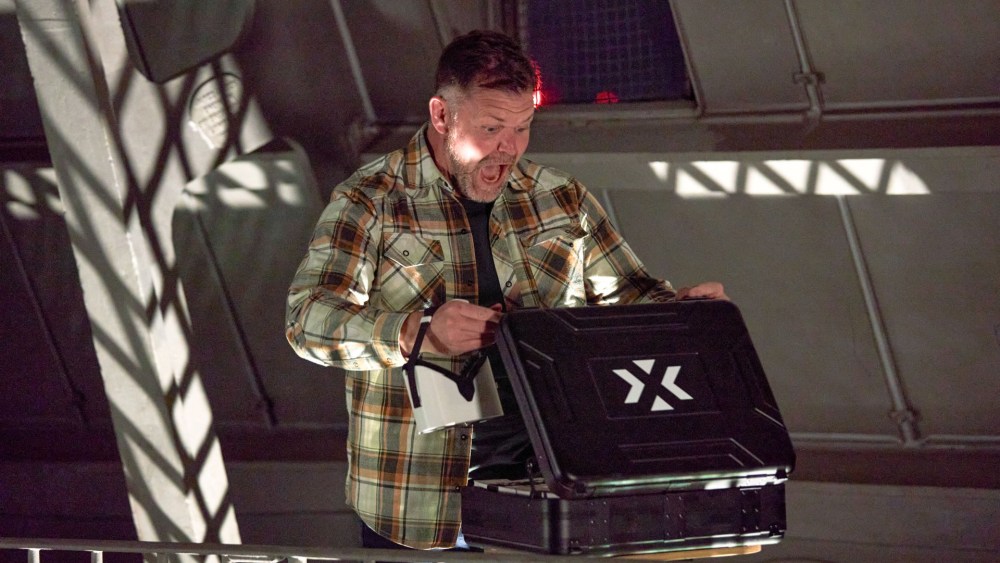“Destination X” crowned Rick Szabo its first-ever winner as the first season came to an end.
Szabo, a bird watcher, was one of the three finalists (along with Biggy Bailey, a sports bettor, and Peter Weber, “The Bachelor” star) whittled down from a group of 10. He ended up winning the grand prize of $250,000
After the episode began with the finalists in a helicopter over London, it was up to them to figure out which city they were in. Trivia and clues hinting at the location led to Szzabo eventually guessing that they were in London and led him to glory.
The show comes from Andy Cadman, who borrowed from the Belgian TV show, “Bestemming X” and adapted it for American audiences. The premise is to take contestants on an adventure when they travel on a blacked-out bus and have to figure out where in the world they are.
But pulling it off provided logistical challenges and a huge crew. Between 10 contestants, production members and crew, “Destination X” racked up the following stats:
Number of miles traveled – 5,316 miles
Number of weeks it took to shoot: 4.5 weeks
Number of hotel rooms – 6,260
Number of crew members – 195
Number of country lines crossed: 10 (Brussels, Italy, Switzerland, France, Belgium, Netherlands, Germany, Austria, Italy, France, U.K.)
Number of challenges completed: 20
Number of crew vehicles in the overall convoy – 46
Number of drivers – 52
“Shooting ‘Destination X’ was like stepping into a well-oiled machine, with Universal Television Alternative Studio’s creative vision and Twofour’s boots on the ground production expertise. It was truly a logistical masterclass and the team nailed it,” said host and executive producer Jeffrey Dean Morgan.
“Pulling off ‘Destination X’ meant building a world-class adventure in real time, crossing country lines, designing challenges and relocating hundreds of crew members and tons of equipment nearly every day,” said Toby Gorman, president of Universal Television Alternative Studio. “Producing the show was a logistical feat, and our partnership with Twofour ensured we could deliver something truly spectacular.”
Cadman discussed adapting the show for American audiences and the challenges of putting the show together as they travel across Europe. He also expressed his hopes for the show’s second season.
This show is based on a successful format that worked in Belgium. What did you need to do to make it friendly for American audiences and adapt it?
I loved the Belgian version. I thought it was a great format. When they first sent the Belgian version to me and I watched it, I thought it was really fun. It obviously wasn’t right for an American audience; it was in the weeds of the geography. I think we all had an ambition, both from the production side and from the network side, to make it more of a competition reality show with more tactics and strategy, and less specifically geography-based.
We tried to create scenarios for the contestants where they could either hold on to or share information, and that became a major part of the season. We drastically changed the format in that, in the Belgian format, everybody goes to the Map Room, and everybody guesses where they are. We thought it would be much more fun to have them put each other into the Map Room, make it a little bit more of the contestants battling one another.
What was the criteria in bringing together this group?
We wanted a little bit of everything. One thing I didn’t anticipate was how much they would study beforehand and how much they would know on arrival. A lot of them really did their homework. As for the casting, it was about character. We wanted to bring in a range of people. Biggy Bailey had never left the U.S., but he was incredibly competitive, and he’d really done his homework, so he felt a good fit to be up against somebody who had done a lot more traveling, like Rick, who had sort of seen a bit more of the world.
You travel across a lot of Europe. What went into finding locations, and what was the toughest one to shoot in?
We wanted to have recognizable landmarks. We wanted the audience to come to it and be able to figure out where they might be. We wanted it to be accessible. When you talk about an adventure around Europe, there are hot spots that you immediately think of, like Paris and Rome.
We also wanted to go somewhere snowy, which dictated that specific location. We just wanted to be able to showcase a little bit of everything that Europe has to offer. We wanted to find challenging locations where the contestants could be out of the bus and not immediately know where they are.
The hardest one to shoot in was the well. In Episode 1, it was so challenging. It was so inaccessible to get the crew, the team and the contestants down there.
Speaking about the crew, these stats: 5,300 miles traveled, 6,200 hotel rooms, 195 crew members, 32 drivers and more. Can you discuss the logistics of putting this show together?
It was really hard for everybody on the logistical side. I think it was something that hadn’t been attempted before, which is always so difficult. We were doing it in a different way from the Belgians. There were a lot more people, covering a lot more miles, and it was very challenging to be able to achieve what we needed to. We needed to be one step ahead for rehearsing, and then we needed the cast to catch up with us.
Now that season 1 has wrapped, what are your plans for season 2?
We’ve got so many ideas. I have lots of ambition for a season 2. It can only be bigger. There’s a whole bunch of places we haven’t explored yet, and there’s plenty of Europe still left to explore.
This interview has been edited and condensed.
